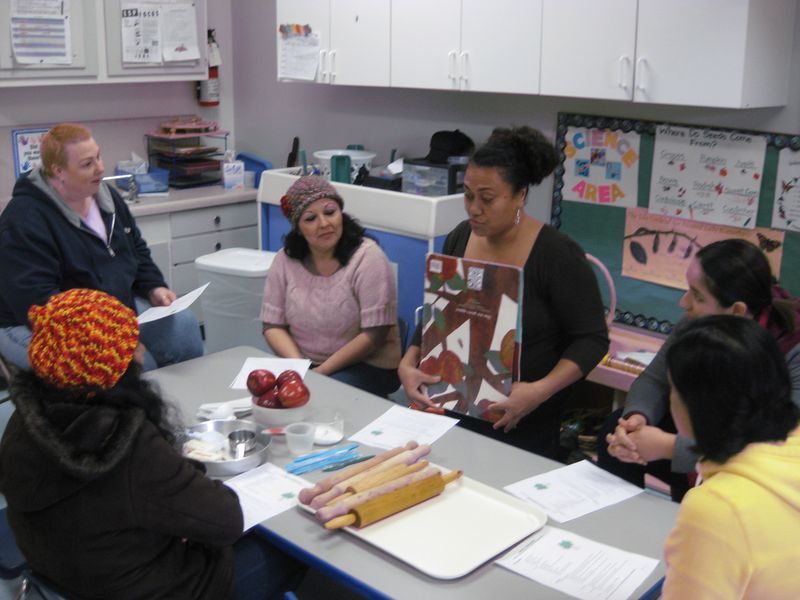However, in spite of the many options available in today’s society, some educators still remain isolated from their school community and the teaching community at large. Some teacher isolation is due their physical location (rural area), some isolation is due to a lack of access to broadband, and some isolation is related to individual teachers not having an interest in connecting. How do we reach out to these teachers? How do we encourage feedback and provide opportunities for teachers to grow and collaborate?

Professional Learning Networks Address Teacher Isolation
One approach to addressing teacher isolation is to utilize social media to connect teachers. Networks such as Twitter can provide teachers a space and community to build their own Personal Learning Networks.
A Personal Learning Network (PLN) is a group of professionals, such as colleagues, scholars, thought leaders, or other practitioners who share insights and even resources in a common field of interest. The idea of a PLN is to connect with other professionals who are not always in the same physical space or location in order to learn and grow professionally or personally. The beauty of a PLN is the many benefits this network offers to educators such as feedback, classroom resources, and discussions related to educational theories and practices. Finally, educators can cater their PLN to reflect their unique needs as educators as each PLN is unique.
A few years back, my learning community embarked on the Individualised Interactive Instructional Technology Initiative (I3). In its second year, I facilitated the initiative’s transition to the high school by organising devices and delivering training to teachers. The goal was for teachers to provide more interactive, individualised and personalised instruction. While not all goals were met in the first few years, we were able to establish a culture of connecting and a knowledge sharing culture among our teachers.
Building Community Connects Educators
Building community among our teachers was our focus when the district adopted Schoology as the LMS for the I3 Initiative. We utilised features like Groups to facilitate the community building process.
We created a group at each school site to serve as a hub for communication. For the initial cohort at the high school, I created a group for the 9th grade team to connect, share ideas, and discuss best practices. Periodically, I would leave announcements or ask questions, but I encouraged teachers to lead the discussion and gear the conversations towards topics that were relevant for them in order to give teachers more opportunities for ownership. Because this was their group, I wanted teachers to guide the discussions to fit what they needed.
In addition to the Groups we created, Schoology has pre-generated Groups within its platform. Each group focuses on different topics that range from blended learning to custom learning objectives to flipped learning. Teachers are able to join groups that interest and pose questions, comments, concerns, or offer support to fellow members. The discussions in these groups also empower participants to share best practices and offer a glimpse into their classrooms.

Building the Knowledge Base Using Technology
Navigating how to go from paper copies and paperback resources to digital resources and spaces may be seamless for some, and may require a mindset shift for others.
As this transition occurs, teachers have to reimagine their learning spaces and teaching approaches in the context of the digital space and online learning. This learning is not only changing for their students, but also for them as they make the leap towards connecting with other educators in digital spaces. This is where building the knowledge base comes into play.
With the Collections feature, teachers can build, design, and store their course materials. At our high school, teachers from every core subject area department were encouraged to co-design their courses for the upcoming school term. For example, one of our year 9 English teachers created a folder in Collections from which she could share assignments and tests/quizzes with others on her team. Her team members did the same in return and this created a rich pool of not only resources, but learning experiences to build and develop individual courses within the Schoology platform.
Much like collections, Groups in Schoology promote sharing among teachers. Teachers are able to join groups, where they have the ability to communicate with each other as well as share classroom artifacts, resources, and lesson plans. What differentiates Groups from collections is that they are more dynamic in nature since participants are able to pose questions and start discussions in addition to posting artifacts or resources. This makes for a more engaging setting where teachers are able to directly ask for advice or feedback from others who are also part of that group.
I implemented Groups at the high school with the hope of creating a space for teachers to connect and engage each other away from their typical PLCs. For instance, Ms. Walker, a former science teacher, posted links to digital resources she was using in her classroom. This simple exchange snowballed into more and more teachers sharing links and other digital materials in the same group post.

What made this more interesting was that this specific group included teachers from different subject areas. So, in spite of their different subject area backgrounds, those interactions were not only relevant but engaging—which speaks to the overall benefits of cross-curricular collaboration. Going in I had hoped that Groups would encourage free dialogue, collaboration, and provide communal support for teachers to ask questions and share their best practices with colleagues in order to create a sense of community between themselves, but to my amazement it went far beyond their content area.
Using Courses to Share Knowledge
Courses are the ultimate way for building a culture of shared knowledge. When teachers reach this point in their Schoology experience, they have the potential to not only guide their own development but their colleagues’ as well.
As the eLearning Director, I was charged with assisting teachers in moving beyond digitising worksheets. To capitalise on the strengths of teachers, I set up a course in Schoology, where I sorted folders by year levels and subject areas. Once this was done, teachers could go into the course to add their own materials such as lesson plans, activities, tests, and other supplemental materials required for their course.
For example, year 7 English teachers would build course units based on the units of the curriculum that they were currently teaching in their physical classrooms. The benefits of this approach were two-fold because not only can returning or more experienced teachers browse through the course to find content for their individual courses, but teachers new to the school had a roadmap for how they could begin to set up their own courses.
Final Thoughts About A Knowledge-Sharing Culture
This digital learning world we find ourselves in has been a learning experience for all of us. Using the online space as a way to connect and collaborate ushered in a new spirit and community among teachers. We have relied on the many facets of Schoology to make the digital transition smoother as well as to garner buy-in from our teachers.
As we continue to grow and move forward, we must continue to build upon the successes of our teachers and put in place practices that allow us to maintain momentum when we see turnover. That is why building a knowledge-sharing culture is so important as we all embark upon this digital journey.

